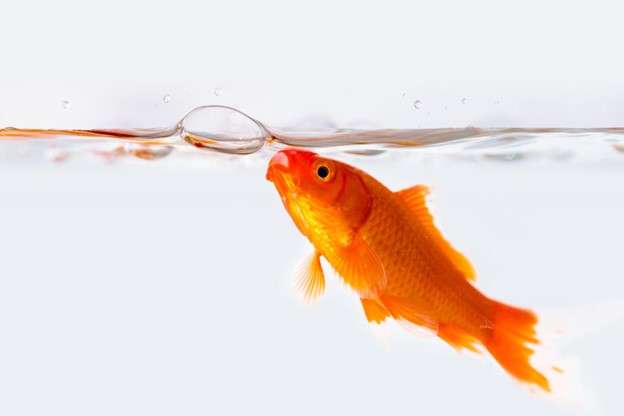Hey there, aquarium enthusiast! So, you’ve taken the plunge into the mesmerizing world of underwater wonderlands, filled with colorful fish and swaying plants. But here’s the scoop: your fishy friends need a little extra something to thrive, and that’s where the trusty old aquarium air pump comes in. Grab your coffee, and let’s dive into the importance, types, setup, and care of these nifty gadgets in a way that feels like a cozy chat with a friend.
Why Every Fish Tank Needs an Air Pump
Picture this: You’re sitting in a room without windows, and the air feels stale. Not a pleasant thought, right?
Fishtanks can feel the same way without an aquarium air pump. Here’s the deal: Fish, like us, need oxygen to survive. They breathe it through their gills, where the air pump comes into play.
An air pump does two remarkable things. First, it helps oxygenate the water by pushing air into the tank. This is crucial because a well-oxygenated tank means healthier, happier fish. Think of it as a breath of fresh air for your aquatic buddies.
Second, it creates water movement. Good circulation is essential for your fish’s well-being. It distributes heat evenly, prevents the formation of icky dead spots, and keeps fish waste from settling at the bottom. Admit it – watching those tiny bubbles rise to the surface is strangely satisfying.
Types of Aquarium Air Pumps: Which One is Right for You?
Now, let’s talk about picking the right air pump. It’s not a one-size-fits-all deal. You’ve got options, my friend.
1. Single Outlet vs. Multi-Outlet: Single outlets are great for smaller tanks. In comparison, multi-outlet pumps can handle larger tanks with ease. Decide based on your tank’s size.
2. Battery-Operated: These pumps are like your tank’s emergency backup. They’re handy during power outages or if you need to transport your fish somewhere.
3. Consider the Noise: Some pumps can get chatty, which might differ from your vibe. Look for quieter models if you’re into peaceful tank environments.
4. Specialty Needs: If you have a deep tank or loads of decorations, consider pumps designed for those setups.
Setting Up Your Air Pump: A Step-By-Step Guide
Now, let’s get hands-on. Setting up an air pump is like a mini DIY project. Imagine you’re talking to a friend who’s never done this before.
- 1. Gather Your Gear: Your air pump, airline tubing, and air stones will be needed. Some folks even throw check valves to prevent water from flowing back into the pump.
- 2. Position Matters: Place your pump below the water level to avoid splashing. A secure spot will keep it happy.
- 3. Connect the Dots: Attach the tubing to your pump’s outlet and connect the other end to your air stone or ornament. The tubing helps carry the precious oxygen down to your fish.
- 4. Plug and Play: Power up your pump and watch the magic happen. Those bubbles start rising, and your fish will thank you.
- 5. Optional Accessories: Get creative with bubble walls, shipwrecks, or treasure chests – they make the bubbles look even more fantastic!
Common Air Pump Issues and How to Solve Them
Uh-oh, sometimes things don’t go swimmingly. Here are some hiccups you might encounter and how to fix them:
- Noisy Pump: Check for loose parts or vibrations if your pump gets too loud. Adjusting its position or placing it on a soft surface can help.
- Weak Bubbles: If the bubbles seem lackluster, clean your air stones. Gunk can clog them up, and a good rinse will get them back to their bubbly best.
- Leaks: Leaky tubing? Replace it. It’s an easy fix and ensures the oxygen flow isn’t interrupted.
- Power Outage Panic: A battery-operated air pump can be a lifesaver. During power outages, Keep one on hand just in case.
Tips for Maintaining a Long-Lasting Air Pump
To keep your air pump chugging along happily, follow these friendly tips:
1. Routine Check-Ups: Give your pump a once-over regularly. Look for loose connections, clean the air stones, and ensure everything’s working as it should.
2. Placement Matters: Keep the pump away from water to avoid accidents. A little precaution goes a long way.
3. Inspect the Tubing: Check the tubing for wear and tear. Over time, it can crack or become brittle. Replace it if needed.
4. Filter Maintenance: If your pump connects to a filter, maintain it per the manufacturer’s recommendations. A clean filter ensures better water quality.
5. Don’t Overdo It: Resist the urge to pump too much air. Your fish need just the right amount, not a bubble blizzard.
So there you have it, friend – the lowdown on aquarium air pumps. They’re like the unsung heroes of your fish tank, quietly ensuring your aquatic buddies have the oxygen and circulation they need to thrive. Whether you’re a newbie or a seasoned aquarist, these trusty gadgets are a must-have for every tank. So give your fish the breath of fresh air they deserve!

